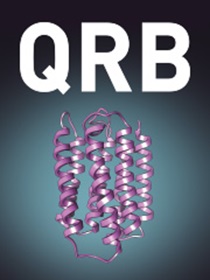夜间导航:昏暗光线下基对磁接收灵敏度的基本限制
IF 5.3
2区 生物学
Q1 BIOPHYSICS
引用次数: 12
摘要
夜游鸣禽似乎通过视网膜感光细胞中隐色素黄蛋白中光化学形成的自由基对中间体来感知地球磁场的方向。考虑到夜间迁徙者所经历的低光照水平,这种依赖光的机制是否足够敏感,这是一个悬而未决的问题。可用光子的稀缺性导致分布在视网膜周围的磁感受器产生的信号具有显著的不确定性。在这里,我们使用信息论的结果来获得精度的下限估计,鸟类可以仅使用地磁线索来定位自己。我们的方法通过计算光子短缺条件下的最佳罗盘精度,绕过了目前缺乏关于体内磁信号转导和处理的知识。我们使用这种方法来评估三种似是而非的隐色素衍生的含黄素自由基对作为潜在磁受体的性能。本文章由计算机程序翻译,如有差异,请以英文原文为准。
Navigating at night: fundamental limits on the sensitivity of radical pair magnetoreception under dim light
Abstract Night-migratory songbirds appear to sense the direction of the Earth's magnetic field via radical pair intermediates formed photochemically in cryptochrome flavoproteins contained in photoreceptor cells in their retinas. It is an open question whether this light-dependent mechanism could be sufficiently sensitive given the low-light levels experienced by nocturnal migrants. The scarcity of available photons results in significant uncertainty in the signal generated by the magnetoreceptors distributed around the retina. Here we use results from Information Theory to obtain a lower bound estimate of the precision with which a bird could orient itself using only geomagnetic cues. Our approach bypasses the current lack of knowledge about magnetic signal transduction and processing in vivo by computing the best-case compass precision under conditions where photons are in short supply. We use this method to assess the performance of three plausible cryptochrome-derived flavin-containing radical pairs as potential magnetoreceptors.
求助全文
通过发布文献求助,成功后即可免费获取论文全文。
去求助
来源期刊

Quarterly Reviews of Biophysics
生物-生物物理
CiteScore
12.90
自引率
1.60%
发文量
16
期刊介绍:
Quarterly Reviews of Biophysics covers the field of experimental and computational biophysics. Experimental biophysics span across different physics-based measurements such as optical microscopy, super-resolution imaging, electron microscopy, X-ray and neutron diffraction, spectroscopy, calorimetry, thermodynamics and their integrated uses. Computational biophysics includes theory, simulations, bioinformatics and system analysis. These biophysical methodologies are used to discover the structure, function and physiology of biological systems in varying complexities from cells, organelles, membranes, protein-nucleic acid complexes, molecular machines to molecules. The majority of reviews published are invited from authors who have made significant contributions to the field, who give critical, readable and sometimes controversial accounts of recent progress and problems in their specialty. The journal has long-standing, worldwide reputation, demonstrated by its high ranking in the ISI Science Citation Index, as a forum for general and specialized communication between biophysicists working in different areas. Thematic issues are occasionally published.
 求助内容:
求助内容: 应助结果提醒方式:
应助结果提醒方式:


